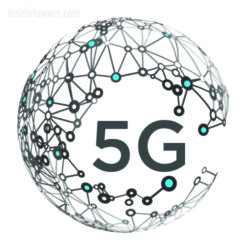Educational hub for the science-minded, Cal Poly, has too much digital traffic for its Wi-Fi to handle. That prompted the university to seek other ways to expand its capabilities. As Mustang News reports, Vice President of Information Technology and Chief Information Officer, Bill Britton, foresees a future in the cloud, courtesy of a campus saturated with 5G connectivity. Britton is already working with the Digital Transformation Hub (DxHub) to test 5G in a lab environment before deploying 5G throughout the Cal Poly campus.
“For WiFi, we build a pipe, and then send as much traffic across the pipe as possible. But there’s limitations,” said Britton. “What we’re trying to do with this laboratory – then to deployment – is to really look at how to be additive in the way we approach bandwidth on campus.” Britton’s goal of moving digital activity to the cloud would unclog the WiFi pipeline that currently processes more digital traffic than it can comfortably handle. While the project is still in an early phase, the creators hope to generate a four-to-one wave point reduction, meaning one 5G antenna can replace four 4G units.
Enrique Duran, Construction Management senior, further explained that the Cal Poly project is employing a “Digital Twin.” The technology, which requires a high amount of bandwidth to operate, scans real world data and recreates it in a virtual space. DXHub has used drones, stationary equipment, and robotics to capture and record readings for the project. When completed, the Twin will make it easier to optimize available connectivity and coordinate the ebb and flow of digital activity.
“It’s just like creating your physical environment and turning it into a video game – being able to interact with your space without having to physically be there is kind of the point,” Duran told Mustang News.
Digital Innovation Project Manager Miyu Nishii added that the Digital Twin has additional applications, like autonomous farming, or teaching without physically entering the classroom. The project aims to be user-friendly, so that people can operate the available functions, even if they don’t thoroughly understand the science behind it.
As Duran explained, “Understanding where it doesn’t work is very critical. As just a normal student or a normal citizen, it’s good to be skeptical of it, ask those questions and understand it, because that could help us innovate and figure out where we need to improve.”





Reader Interactions